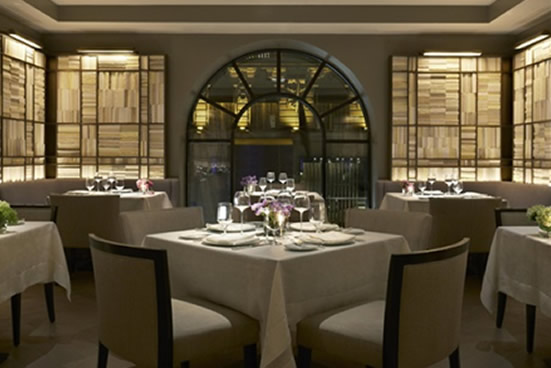

It cannot be overstated- Lighting is the oxygen to a stores lungs. Without a comprehensive plan for proper lighting sales will be lost, repeat customers will not repeat, success will be elusive. Lighting is not as important as color or scale or texture; Lighting is far more important! Lighting is not about quantity, it is all about quality.
As this is my first blog on this overwhelming subject I will start with some basic principles to form a foundation for future discussions. There are 3 general functions that a luminaire performs within any given space. The weight given to each defines the use of the space and the designer’s intent.
The first and most general is Ambient Lighting. For the first decades after the electric light was invented this was the only type of fixture. The single bare bulb hanging in the center of a room is the classic example of ambient lighting. To this day virtually all spaces contain this lighting technique mainly for navigation and safety. Used solely within a room it can be psychologically harmful and depressing. Seldom does a good designer simply hang lights from a ceiling and call it a day. Even in low cost environments lighting should be shielded for glare and used indirectly as bounced off a ceiling for instance.
Big box retailers use this method for the great majority of the visual light within their stores. This type of merchandise lighting is the cheapest and least appealing but is a signal to the consumer that the merchandise is low cost and a great bargain. You will not see this lighting used so liberally in a high end boutique for the exact opposite reasons.

Example of typical and appropriate ambient lighting used in value price setting.
Merchandise is not exciting but consumers equate the low light level with low prices.
The second and least important in the retail environment is called Task Lighting. This function is required by the customer to read labels, write a check, try on clothing, and read a menu. The employee uses this lighting to operate cash registers and find merchandise in a stock room. This lighting type is much more important to the educational field where reading is required and the manufacturing environment where life and limb are threatened.

This salon is sedate and relaxing yet intense task light is focused where it is required by employees.
The third and most important in our industry is Accent Lighting. The great majority of illumination seen from the display window to the back of the store is this type of lighting. It is intended to show off merchandise and highlight architectural features to set a mood. Interestingly as the merchandise price escalates the percentage of light devoted to the general space diminishes. All the light is focused on that fabulous bauble to make it irresistible. These intensely lit areas must be layered throughout the store or the light will fight against itself requiring even more watts to ‘outdo’ the adjacent display. Accent lighting gives hints to the consumer about merchandise quality and who the shopkeeper is interested in attracting. Balancing the accent light against ambient lighting is the key to a properly considered store. Included in this category are pendants and other decorative lighting which are used with great success to make a space inviting and interesting.

Placing the majority of the light within the retail fixtures allows the merchandise to predominate
in this well conceived shop. Notice the uncluttered ceiling which is another byproduct of this lighting method.

Very low light levels are expected and pleasing for an expensive restaurant. A spot light is
strategically aimed into the center of the table to accent the food and provide task lighting
when reading the menu.
No matter how well a space is laid out, or how beautiful the finishes are, a store cannot thrive without light. And light must be shaped and focused in proper proportions to perform its job. The successful store planner is always investigating the newest technology and novel idea to light his space but must always refer back to the three general lighting functions discussed herein to be considered invaluable.
by: Matthew Norris